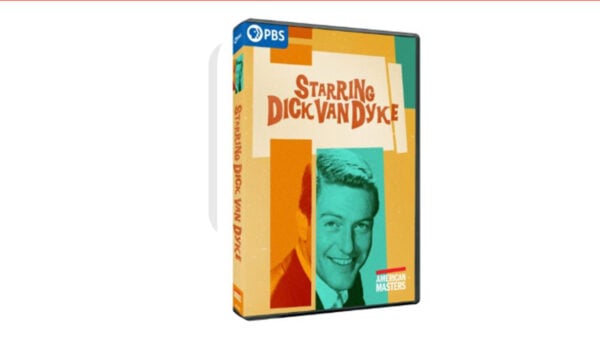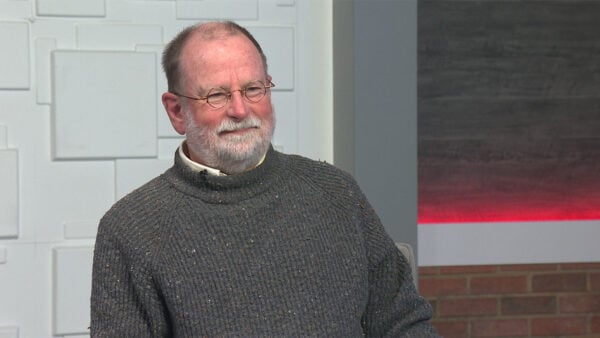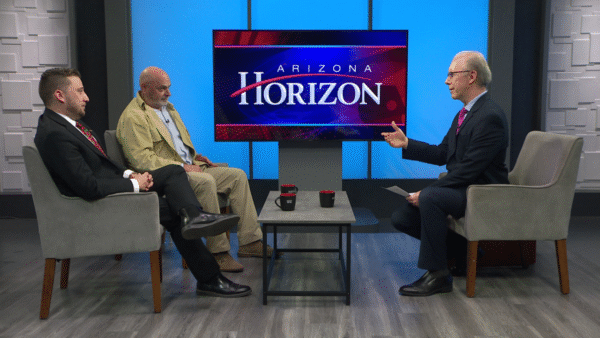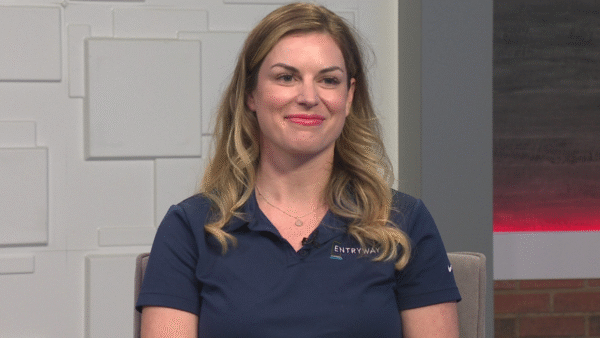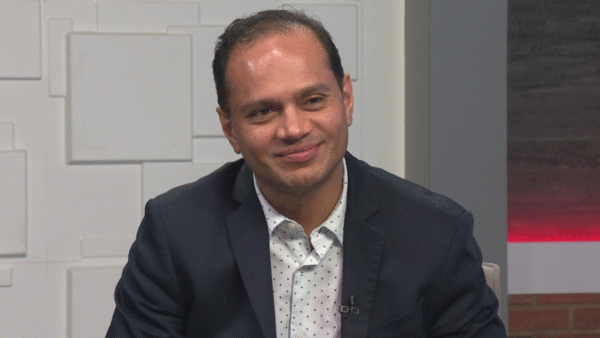The Valley Forward Association has named the winners of its 2010 Environmental Excellence Awards. Join Valley Forward President Diane Brossart and the competition’s Lead Judge John Kane, design principal of Architekton, as they spotlight some of this year’s award recipients.
Ted Simons: Every year the valley forward association holds its environmental excellence awards. Here now to discuss some of the winning projects from this year's event are valley forward president Diane Brossart, and the competition's lead judge, John Kane, design principal of Architekton. Good to see you again.
Diane Brossart: Thank you.
Ted Simons: Let's start with what these awards are designed to do.
Diane Brossart: These rewards really set standards for the physical, technical, and environment development of the valley. They are very prestigious, our first place award, I think they're coveted by the built environment, professionals, and technologists, and so forth.
Ted Simons: The idea that you're focused on environmental initiatives, what does that mean?
Diane Brossart: Well, sustainability and just what is going to make our valley a better place to live. Environmentalism is suddenly gone so mainstream, but this program is in its 30th year. And it recognizes contributions to the built environment, to technology, media, art --
Ted Simons: OK.
Diane Brossart: Several different categories.
Ted Simons: John, what gets the judges' attention as far as the competitors, the --
John Kane: I think the variety of things that are advancing the community -- Things that are pushing the envelope in terms of how things have been done over time, which is really exciting. And they're not just buildings, these are art projects, landscapes, etc.
Ted Simons: Are you seeing any trends this year, anything -- even the past few years, are we moving in a certain direction, or is it just basically each year is distinctive on its own?
John Kane: I think what we've seen this year is connectivity. We'll see that maybe with some of the canal projects. The idea that we're starting to knit together, a lot of the projects were here in the -- within the metropolitan area, which is really exciting. The knitting and the kind of reconnecting of the thesis.
Ted Simons: Let's look at some of the winners. One of the big winners was the Rio Salado Audubon Center. Why was that particular thing recognized?
Diane Brossart: For many reasons, aside from the building itself, which is really impressive and very environmental in scope. The first LEED certified platinum certification in the city of Phoenix. Beyond, that it's for what it does for that whole area of south Phoenix in terms of river restoration and bringing life back to the community, providing a gathering place for people, for facilitating environmental education, for creating an open space in the heart of the urban center. It's a wonderful project for so many reasons.
Ted Simons: And the building is beautiful, and the landscape, the atmosphere out there is gorgeous. You don't realize where you are in terms of the city of Phoenix.
Diane Brossart: It is.
Ted Simons: Trace Rios constructed wetlands was the winner. Talk to us about this
John Kane: It's a reconstruction of a riparian habitat. We've had -- this project actually is bringing back this whole new -- this whole idea of landscape as not only recreation, but also was water treatment.
Ted Simons: Was this a riparian area before, was it lost for a while and now it's being returned?
John Kane: Now it's being brought back to its natural habitat.
Ted Simons: Where was this again?
John Kane: This is a combination project with city of Glendale, Phoenix, and a bunch of cities that came together to create this along the salt river.
Ted Simons: Speaking of folks getting together, Papago Park is the master plan, getting that thing going again. That was recognized as well.
Diane Brossart: That is one of the -- I thought of all the projects that one showed collaboration to such a significant extent with Phoenix, Tempe, Scottsdale, and the salt river Pima Indian community coming together to talk about what could the Papago Park be, what is the great next American park, you look at Central Park in New York, and Balboa park in San Diego, and the potential for what we have right in our central city was quite significant. So this was recognizing a plan for the development of Papago park.
Ted Simons: Recognizing the collaboration as well, correct?
Diane Brossart: Absolutely.
Ted Simons: We have a fire station, john, we've got Scottsdale fire station number 2? LEED certified, platinum, platinum?
John Kane: LEED platinum, the first one in the nation, actually, which is quite a coup. We've got so many different areas that are hard to make that work. Infill project in stale, a wonderful project.
Ted Simons: How long has this building been around?
Diane Brossart: I think it was new construction. And my brother-in-law works in it. And the mayor apparently held up his award at the city council meeting and so there was a lot of buzz in the city about --
Ted Simons: LEED platinum votes any building certified is a big deal. Because that means you have to jump through a lot of hoops and make sure things are square. That was neat to see. Then we brought something new and modern, something perhaps, not perhaps, much more traditional, the Sandra Day O'Connor house. Talk about this project.
Diane Brossart: That was a special project, in that it was the home of the former chief justice, Sandra O'Connor and she lived in the house in Paradise Valley, and then when she sold it, at 1700 square feet around 1981, they took it apart, brick by brick, and reconstructed it, which is really amazing, 6,000 bricks, I'm told, it was deconstruct and transported to Tempe, and it now lives in the Carl Hayden Campus for Sustainability. And is a gathering place for people, it is the center for civic discourse, so it's a place that people can go and air their differences in a beautiful setting.
Ted Simons: And knock it off with the yelling and shouting and relax a little bit.
Diane Brossart: You think?
Ted Simons: What are we talking about, this was a number of things like projects and pads, describe for us what was recognized.
John Kane: The canal itself, relatively small canal, but the idea that it had to solve a function of flooding when it rains, the heavy rain, but they took it so much further with the integration of art, and part of the connection. Where you can ride bikes, and walk along the wonderful piece of infrastructure.
Ted Simons: This is the -- how does that work with the western canal, the multiuse - Is that the same thing?
John Kane: We gave three different awards for three different projects. This idea of connectivity, what has been always in the back yards and we've kind of forgotten about, we're rediscovering our canals and they're becoming a wonderful new kind of front to the community.
Ted Simons: The western canal, a multiuse path project, where is that?
John Kane: The western canal --
Diane Brossart: Is it in Phoenix?
John Kane: That's the Phoenix one. That's the one that's actually I think actually associated with the --
Diane Brossart: I'm wrong, it's the city of Tempe.
John Kane: The six-mile canal, it connects Tempe all the way to Mesa and Chandler.
Ted Simons: That looks like the Ken Mcdonald golf course. OK. And then there was a little canyon trail as well. Talk about that one.
John Kane: Next to Grand Canyon University, a half mile trail, just beautiful. It was run down, everybody forgot it, really intimate, and again, just a small wonderful example of what the canals can be.
Ted Simons: Diane, the global climate change in the southwest and a -- an academy for educators.
Diane Brossart: This was an environmental education project. And we all know teachers have such limited resources and are in such need of help in the classroom. This provides educators with the opportunity to participate in two professional development courses and learn about global climate change, and how you can make a difference, and not only was it instruction that met state standards, but they went on some field trips and really got to have a great understanding and reached 1800 students as a result of that. So it was neat project.
Ted Simons: Another example of how you look at bricks and mortar, or whatever, and you also look at programs and projects. And these sorts of things.
Diane Brossart: Exactly. The academies awards of the environmental community.
Ted Simons: Is that what it?
Diane Brossart: You didn't say you were the master of ceremonies and did a masterful job this year. I'll say that for.
Ted Simons: You well thank you. City of Phoenix, the preserve, also recognized.
John Kane: Special projects, this has been going on for quite a few years, in the '90s they were smart enough to think about saving the native natural land from development. And so these were something that all of us get to enjoy. I think the natural park is within 16 miles of anybody in the community. So it's really close, these are amazing parks for biking and hikeing.
Ted Simons: You see these things, we've seen the videos, we've seen the photographs and things, and it reminds you, because there's a lot of folks yelling and screaming right now, there's a lot of good stuff around the valley and around the state right now.
John Kane: Absolutely.
Ted Simons: Same thing for new.
Diane Brossart: I will tell you, because we all hear about the recession and gloom and doom, and this program is very inspiring. And showcases what some of the good things that are happening around the valley, and we really are a leader in the whole green movement, which is exciting, and it supports a healthy environment and a healthy economy go hand in hand.
Ted Simons: Is this the kind of thing where next year you will see only new projects, or will some of these things be either developed or recognized? How does that work?
Diane Brossart: Once you've won an award from valley forward, you you're not eligible to resubmit in the same category. But could you resubmit in a different category. My guess is you'll see a whole different crop of awards, and every year it's my favorite event that we do, because it is so inspiring, and showcases all the good work.
Ted Simons: Talk about valley forward. And what you do.
Diane Brossart: It is a 41-year-old environmental public interest group, business based, so we bring business and civic leaders together to focus on how do we make the valley a better place to live, how do we improve the environmental quality and sustainability of our region.
Ted Simons: Have you noticed over the years, and again, we're talking now because it's pretty volatile world out there right now, there's some things happening to people, trying to get adjusted, are you finding in that kind of an environment there's more of a, let's get together and get this circle the wagon, or it is more difficult than it has been in the past to get folks on board?
Diane Brossart: I would say, I think people are coming together, and that's the whole good news about some of the dire news that you're hearing. Because valley forward can't do it on its own. We need to collaborate with other organizations and other groups, and if we don't all work together to make the valley a better place to live, then we're all going down together.
Ted Simons: OK.
Diane Brossart: So I would I like to think we're on an upward swing.
Ted Simons: And I have to ask you quickly, I heard that the moderator did a good job, did the emcee do OK?
John Kane: He was fantastic.
Ted Simons: That's all I needed to hear.
Diane Brossart: The judges were pretty good too.
Ted Simons: Thank you both for joining us. Please --
Diane Brossart: SRP, we couldn't have done it without them. They were a huge help, and this is their ninth year of supporting this program.
Ted Simons: Good enough. Thank you for joining us.
Diane Brossart:Valley Forward President;John Kane:Judge;








